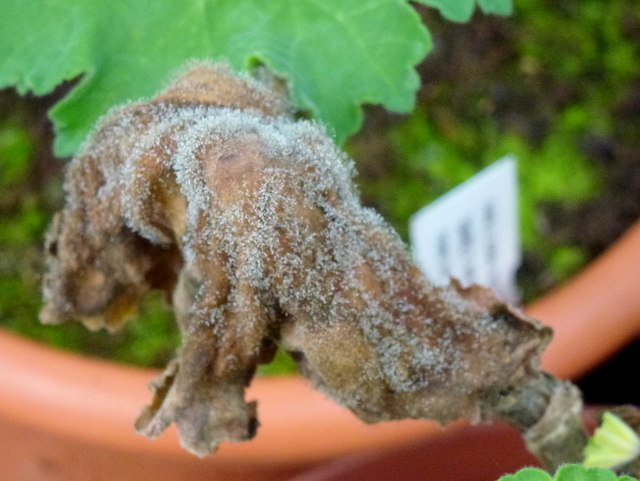Botrytis Blight (also known as Botrytis cinerea, bud rot, or gray mold) is a fungal disease that affects flowers, foliage, bulbs, and buds of a variety of different plants. It’s one of the main reasons why cut flowers and plants decay.
Unfortunately, it’s also highly contagious and can damage your crops.
Which plants are affected by Botrytis cinerea?
Many plant species are affected by Botrytis Blight. Some plants with thick flower petals—such as peonies, geraniums, and begonias—are very susceptible to the disease. Cannabis plants, African violet, delphinium, iris, camellia, dahlias, and hyacinth can also be affected.
Fruits, vegetables, and berries can even be affected by mold after they’ve been harvested, so mold control is extremely important.
What does Botrytis Blight look like?
You’ll know if Botrytis Blight is present as there are a few visible symptoms that you can see with the naked eye:
- Brown spots on plant tissue (including leaves, flowers, and buds)
- Leaf spots and irregular flecks on flowers
- Gray mold may be visible on plant parts

Once you spot gray mold, it’s likely that Botrytis Blight already has penetrated your garden. Botrytis blight usually only becomes visible after two or three weeks.

What causes Botrytis Blight?
Botrytis Blight is caused by a fungus called Botrytis cinerea that lives on dead plant debris. It spreads spores to infect damaged plant tissues. Unfortunately, this damage can then move to the healthy plant parts too, including could be leaves, flower petals, buds, or stems, and affect your entire garden. This becomes even more likely if you’re practicing hydroponic gardening.
Plant diseases can make your garden far more susceptible to Botrytis Blight, so it’s very important that disease control is high on your agenda.
Botrytis Blight loves high humidity and damp conditions, especially coupled with cooler weather, so keep an eye on the conditions in your garden or growing space for symptoms of the disease, such as spots on your plants’ leaves. Often, you’ll see an outbreak following long periods of rain, especially in spring or summer.
How do you prevent Gray Mold?
There are six key ways to prevent Botrytis Blight from affecting your plants:
- Good sanitation practices: Sanitation is a crucial part of gardening, especially in hydroponic systems. Destroy all plant parts that show signs of infection as soon as you spot them. This eradicates the conditions that Botrytis spores thrive in.
- Use a fungicide: Use a fungicide, such as thiophanate-methyl, copper, sulfur, maneb, mancozeb, captain, or chlorothalonil every 10 days (before you spot any infections) to protect your garden from rot and diseases. Check product labels to see the active ingredients used. Neem oil is also often used.
- Practice plant management: Encourage healthy plants by avoiding overcrowding and ensuring that plants have good air circulation, Botrytis can be kept at bay. Gray mold loves poor air circulation, high relative humidity, and poor ventilation.
- Monitor environmental conditions: Gray mold loves high relative humidity and temperatures between 60-75°F. Use an inline fan to improve air circulation in your grow space.
- Don’t overfeed: It can be tempting to nourish your plants but be warned: too much nitrogen in the soil can cause tender growth that can be susceptible to disease.
- Avoid overhead watering: A good hydroponics system can help to keep buds and flowers dry, which reduces the conditions that the Botrytis Blight fungus loves.
Prevention and vigilance are much better than treatment; it’s always better to try to stop Botrytis Blight or gray mold from setting in in the first place.
How do you get rid of Botrytis Blight?
Once you see symptoms of Botrytis Blight, it’s important to mitigate the conditions it loves.
- Clear away any damp, rotting foliage in the area where spores may be lurking.
- Completely remove and destroy any affected plant tissue.
- Don’t use the removed tissue for compost, as this will just continue to spread the mold through your growing space.
- Ensure that any equipment you use has been disinfected thoroughly between uses to avoid further spreading of the gray mold infection.
You then need to improve air flow and use an effective fungicide every 7-10 days, especially if the weather is going to be cool and wet.
Contact IGT if you have any questions about managing Botrytis Blight (also called bud rot or gray mold), if you need help identifying the spots you’re seeing on your cannabis leaves or foliage, or if you want recommendations for the best fungicide brands to manage the species of fungus affecting your indoor garden.
